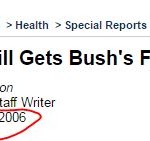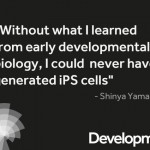
Organoids and the Coming Medical Revolution - (ii)
Previous segment - Organoids and the Coming Medical Revolution (i)
In 2006, Yamanaka surprised the whole world by announcing that he could turn adult mouse fibroblasts into pluripotent stem cells by applying four transcription factors - Sox2, Oct4, Klf4 and c-Myc. Those pluripotent stem cells can then be converted to any other cell lineage of the body.
To fully appreciate the significance of Yamanaka’s discovery, you need to also consider the political climate of 2006. The human genome assembly was completed around 2000-2001, and the researchers were looking for ways to use the genome to improve human health. Stem cell research was recognized as a potentially beneficial area, but work on human embryonic stem cells also got associated with killing babies. So, Federal funding stopped for using human embryonic stem cells in research. To add to complications, the research institutes had to build separate facilities to isolate federally funded research from human stem cell research from other funding.
2006 being an election year, Bush made a big deal of vetoing a stem cell bill to hide his Iraq war failure.

Stem Cell Bill Gets Bush’s First Veto
By Charles Babington
Washington Post Staff Writer
Thursday, July 20, 2006
President Bush issued the first veto of his five-year-old administration yesterday, rejecting Congress’s bid to lift funding restrictions on human embryonic stem cell research and underscoring his party’s split on an emotional issue in this fall’s elections.
At a White House ceremony where he was joined by children produced from what he called “adopted” frozen embryos, Bush said taxpayers should not support research on surplus embryos at fertility clinics, even if they offer possible medical breakthroughs and are slated for disposal.
The vetoed bill “would support the taking of innocent human life in the hope of finding medical benefits for others,” the president said, as babies cooed and cried behind him. “It crosses a moral boundary that our decent society needs to respect.” Each child on the stage, he said, “began his or her life as a frozen embryo that was created for in vitro fertilization but remained unused after the fertility treatments were complete. . . . These boys and girls are not spare parts.”
Within hours of Bush’s announcement, the House, as expected, fell short in a bid to override the veto, extinguishing the issue as a legislative matter this year but not as a political matter. Democrats said voters will penalize GOP candidates for the demise of a popular measure, and predicted the issue could trigger the defeat of Bush allies such as Sen. James M. Talent, who faces a tough reelection battle in Missouri.
Yamanaka’s discovery came as a big sign of relief, because turning one’s skin cells or other cells back into (induced) pluripotent stem cells by applying enzymes bypassed those ethical questions. The action was equivalent to using a time machine on a developed cell and turning the clock back. Books of moral dilemma do not have a chapter on negative time actions.
Readers will enjoy the following interview of Yamanaka, where he talked about his amazing discovery.
What inspired him to choose those four transcription factors? More on that topic in the following post, but here is a hint (h/t: Developmental Biology)
